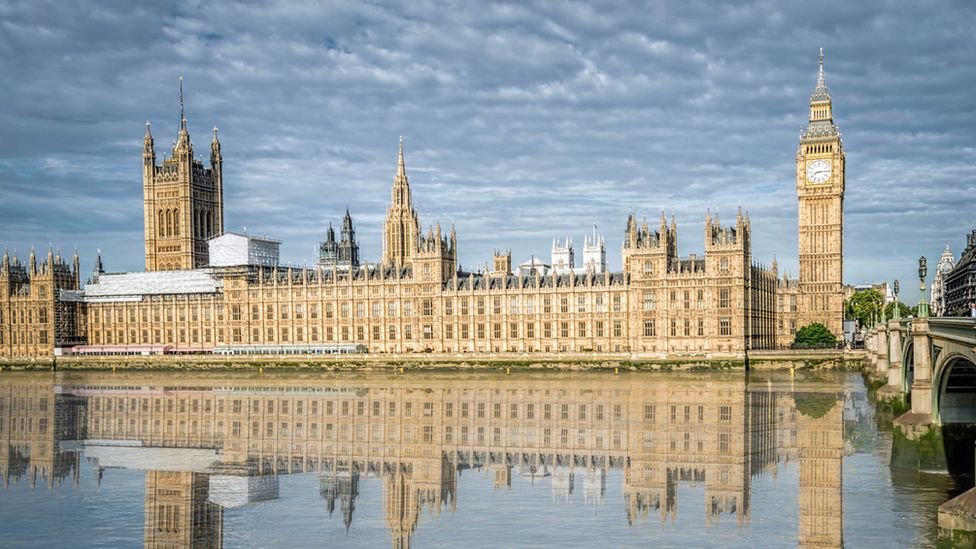Palace of Westminster: Possible remains of medieval Thames river wall found
- Published

Possible remains of the medieval Thames shoreline have been uncovered by experts restoring the Palace of Westminster.
The stone structures, under a section of the House of Lords chamber, are likely to be at least 700 years old.
Engineers spent thousands of hours investigating and drilling boreholes as part of the ongoing work on the Houses of Parliament.
The Museum of London Archaeology (MOLA) is now assessing the remains.
Sir Lindsay Hoyle, Speaker of the House of Commons said: "The Palace of Westminster is a treasure trove of history, and making sure this is properly conserved whilst also getting on with the vital job of restoring this unique place is a key priority."
The work, as part of the Restoration and Renewal Programme, has involved drilling 70m (230ft) deep - deeper than the Elizabeth line - to assess ground conditions under the Houses of Parliament.
A small amount of material from the river wall was removed for analysis before the site was carefully sealed up again to protect the structure.
The ground assessment project by Concept Engineering based in Coventry has drilled five out of a possible 15 to 20 boreholes since the summer, and will continue work until summer 2023.
The company said the structure which marks the border of the ancient embankment, was found just a few metres below the surface.
It is made from Kentish Ragstone, a hard grey limestone quarried from Kent that was also used in the construction of the Tower of London and Westminster Abbey.
Archaeologists discovered part of the medieval river wall in Black Rod's Garden in Westminster in 2015, making this a second finding of the wall.
The first, found medieval timber structures thought to represent waterfront revetments, with a wall that runs alongside the medieval location of the riverside.
When the Palace was built in the 1800s, after many of the medieval buildings burned down, the land was reclaimed from the Thames to make the Palace site bigger.
Roland Tillyer, an archaeologist from MOLA said: "We were expecting [stone structures] might be present in this area and the borehole in Chancellor's Court may have encountered it.
"The first few metres of the borehole sequence was as expected, post medieval dump deposits, which are quite soft, but then around 3.5m (11.5ft) we came across much harder material, including Kentish ragstone, mixed with a sandy mortar."
A spokesperson for the Restoration and Renewal Programme said archaeologists had been on-site for each of the boreholes to record any finds of historical significance.
Follow BBC London on Facebook, Twitter and Instagram. Send your story ideas to hellobbclondon@bbc.co.uk
- Published23 February 2022
- Published18 June 2015
- Published13 February 2022
- Published22 October 2021